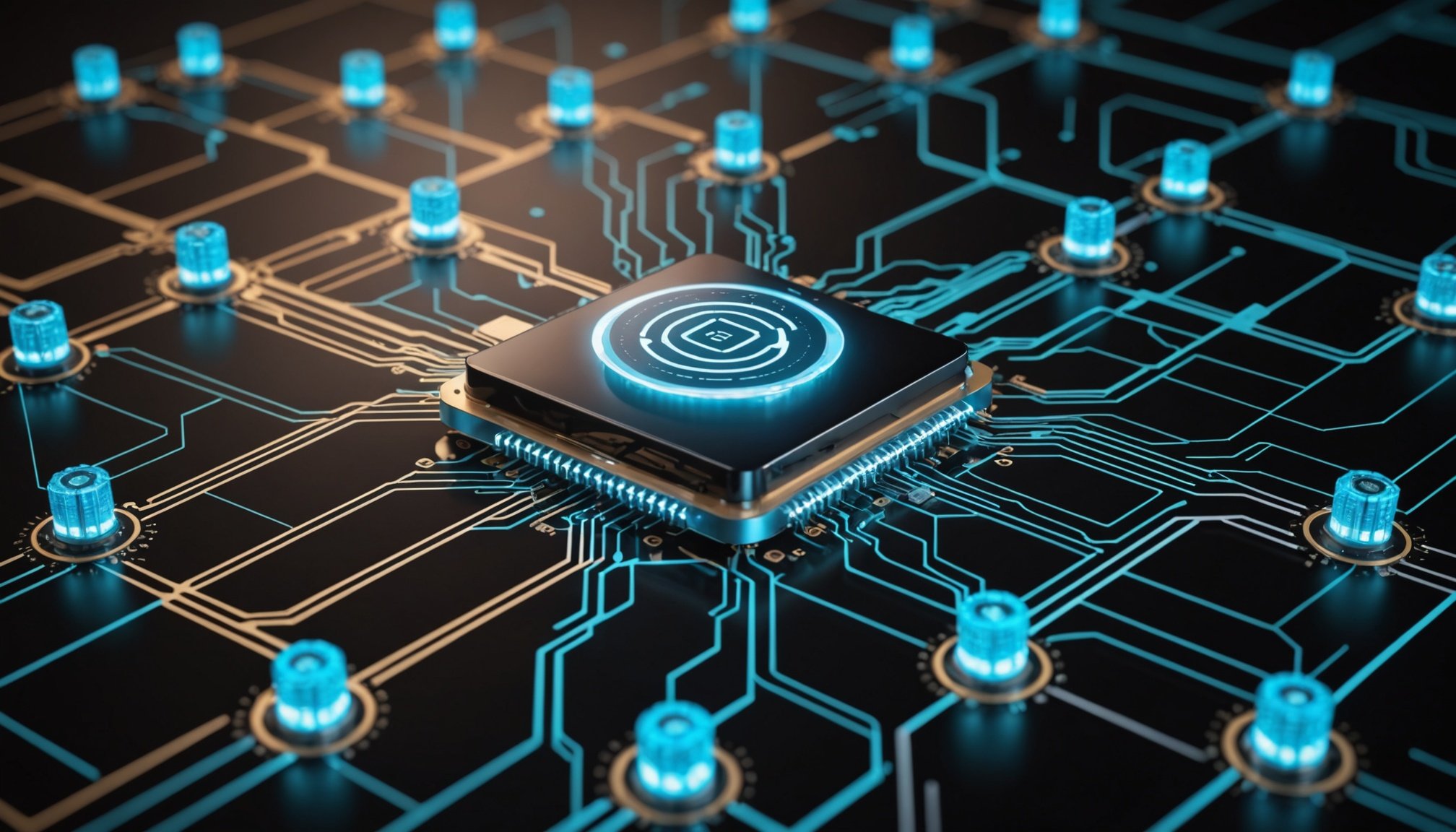Understanding AI Performance in IoT Networks
Delving into AI performance within IoT networks unveils the intricate dynamics essential for advancing smart technologies. AI performance refers to the effectiveness and efficiency with which artificial intelligence operates, particularly within IoT networks. This metric is crucial, as it determines the overall ability of systems to process data, make decisions, and enhance functionality in these interconnected devices.
When assessing AI performance, several key performance metrics come to the forefront. These include processing speed, accuracy, response time, and resource utilization. Each of these metrics provides a lens through which the effectiveness of AI in IoT environments can be evaluated.
This might interest you : Essential strategies for securing ai-driven financial analytics: ensuring safe implementation practices
The integration of AI and IoT is rapidly evolving, with substantial advancements being made. As industries increasingly rely on smart systems, understanding the state of AI interwoven with IoT becomes indispensable.
However, to truly understand AI’s potential, it’s vital to examine how these metrics influence the seamless operation of IoT networks. Such insights are crucial for leveraging AI applications effectively, especially in fields like smart cities and industrial automation, where reliable performance drives innovation and efficiency.
In the same genre : Transforming Renewable Energy: Harnessing AI for Enhanced Management and Maximum Efficiency
Proven Strategies for Enhancing AI Efficiency
In the quest for boosting AI efficiency, especially in IoT networks, certain strategies stand out. One primary method is the implementation of data preprocessing techniques. These techniques are essential for ensuring that the input data is clean and structured, thus enhancing the adaptability and functionality of AI systems in analysing complex data sets.
Next, the utilisation of machine learning (ML) algorithms specifically crafted for IoT data plays a pivotal role. Tailored ML algorithms ensure the AI model can effectively handle the unique characteristics of IoT networks, such as varied data streams and real-time processing requirements. They enhance predictive capabilities and improve decision-making processes.
Moreover, adopting edge computing serves as a game-changing strategy to reduce latency and improve response times. By processing data closer to its source, edge computing decreases the load on central servers and enables prompt data-driven actions. This is particularly useful in applications where immediate responses are crucial, such as in autonomous vehicles or remote health monitoring.
Overall, these strategies underscore significant advancements in AI optimisation, paving the way for more robust and efficient IoT deployments. By focusing on data, algorithms, and computing infrastructure, organisations can achieve enhanced efficiencies in their AI applications.
Tools and Technologies for AI in IoT
In the dynamic world of IoT, harnessing AI technologies and tools becomes crucial for innovation. These tools are the backbone that supports AI’s functionality within IoT ecosystems, enhancing performance and integration.
AI Algorithms and Frameworks
The deployment of AI algorithms is integral to IoT applications. Leading algorithms like neural networks, decision trees, and reinforcement learning tailor to IoT’s demands, enabling efficient data processing. Frameworks such as TensorFlow and PyTorch streamline development, offering robust resources for designing and deploying AI models that meet the unique needs of IoT environments.
IoT Platforms and Integration Solutions
Integrating AI with IoT requires powerful platforms. Popular platforms like AWS IoT and Google Cloud IoT provide extensive support for AI functionalities, facilitating smoother data flow and better resource management. These platforms simplify the deployment of AI solutions, offering pre-configured tools that encourage seamless IoT integration and enhance overall system efficiency.
Performance Monitoring Tools
Effective monitoring tools are essential for analysing and optimizing AI performance. Software like Prometheus and Grafana enable real-time performance tracking, measuring key indicators and providing insights into AI’s operational efficiency. These tools are imperative for assessing AI outcomes, ensuring that systems are performing optimally and aligning with strategic objectives.
Real-World Applications and Case Studies
Exploring real-world applications of AI in IoT environments reveals the transformative power these innovations hold. Take for instance, smart cities, where AI-driven traffic management systems reduce congestion through data analysis and adaptive signal control. This showcases a significant performance improvement in urban planning and public transportation efficiency.
Furthermore, in the agricultural sector, AI integration powers IoT-enabled sensors for real-time crop monitoring. This leads to optimal resource utilisation and increases yield by adapting to environmental changes promptly. Another success story is in healthcare, where remote patient monitoring through IoT devices ensures timely medical interventions, displaying life-saving potential with enhanced AI performance.
Industries have documented considerable improvements post AI implementation. A case in point is the manufacturing domain, where predictive maintenance using AI algorithms foretells equipment failures, achieving reduced downtime and extending machinery lifespan.
These case studies underscore the importance of AI technologies in driving efficiency and innovation across various fields. By analysing these instances, organizations can draw insightful learnings, aiding them in strategising and implementing AI solutions that pave the way for enhanced service delivery and optimised processes.
Measuring Performance Improvements
Improving AI performance in IoT networks hinges on accurate performance measurement. Efficiently tracking key indicators ensures precise enhancement in technological capabilities.
Establishing Baseline Metrics
A foundational step is to establish baseline metrics. These benchmarks allow for consistent comparisons over time. Having standards such as accuracy, processing speed, and latency is crucial. They act as reference points for evaluating improvement and ensuring AI systems function at optimal levels.
Techniques for Continuous Monitoring
Continuous monitoring is imperative for real-time performance measurement. Implementing tools for regular data checks ensures seamless operations. Techniques like anomaly detection algorithms identify deviations, allowing proactive troubleshooting. Such real-time tracking facilitates timely adjustments and mitigates potential failures.
Analyzing Improvement for Strategic Decisions
Analyzing collected data is key for improvement metrics. By examining trends and changes in performance, stakeholders can make informed strategic decisions. This involves interpreting results from various metrics and adapting strategies, enhancing AI’s role in evolving IoT networks. It provides a clear view of progress, ensuring alignment with overarching goals and driving sustained innovation.
Implementing these methods ensures a robust framework for measuring enhancements, solidifying the role of AI in transforming IoT landscapes.
Addressing Challenges and Solutions
The implementation of AI in IoT networks frequently encounters numerous challenges. These hurdles often stem from technical limitations, data privacy issues, and integration complexities.
Common Challenges
One of the most prevalent challenges is the technical limitation associated with processing large volumes of data across disparate IoT devices. These devices often differ in terms of compatibility and capability, making seamless AI integration difficult. Additionally, ensuring data privacy while processing information is a key concern, as sensitive data is continually circulated within these networks.
Strategies and Solutions
To address these issues, adopting unified communication protocols and investing in robust security frameworks are practical solutions. These strategies facilitate smoother integration and ensure that data is protected against unauthorized access. Furthermore, employing advanced data encryption techniques safeguards against potential breaches.
Recommendations for Teamwork
Overcoming these challenges also calls for collaborative efforts among stakeholders. Encouraging teamwork and fostering open communication between developers, data scientists, and IT professionals are critical. This coordinated approach enhances understanding, ensuring AI applications are optimally tailored to suit the unique demands of IoT networks. By leveraging collective expertise, organizations can effectively navigate the complexities of AI implementation.











